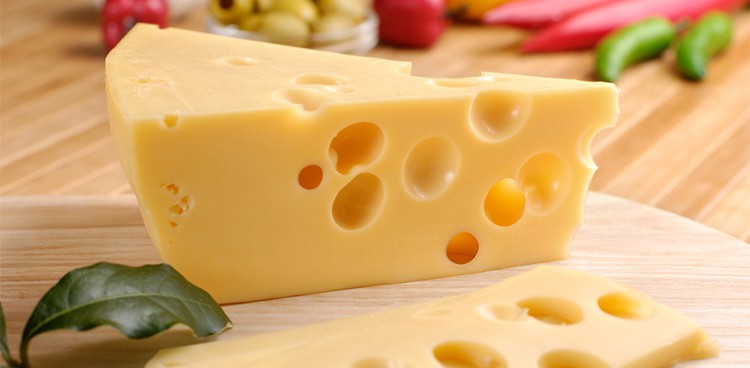
This article is the first in a weekly series that will look at the science behind cheese and try to answer frequently asked questions about why cheese is the way it is. Look for weekly updates and let culture know if you have any burning cheese questions.
Why does Swiss cheese have holes in it?
Many of us asked our parents at a young age, and many of them replied that mice nibbled on it during the night.
We have a more scientific (and more sanitary) explanation.
First, let’s talk cheese names a bit. In the US, we tend to refer to anything with holes in it as Swiss, and a good deal of the Swiss cheese we eat is produced here in the States. If you were to hop on a plane and fly across the Atlantic, you would find a slightly different story (in addition to being out the cost of airfare). In Switzerland, Emmentaler is the original Swiss cheese and the inspiration for its US counterpart. Norwegian cheesemakers produce Jarlsberg, which can also be found in the US and is popular in fondues.
All the cheeses are made from cow’s milk and all also have distinctive holes. These holes are known as eyes. (Fun fact: Swiss cheeses made without eyes are called “blind.”)
Where do these eyes come from? The answer, like most of the inner workings of cheese, has to do with bacteria. One particular culture of bacteria added to the cheese, P. shermani, produces carbon dioxide as the cheese ages and ripens and the CO2 forms small air bubbles in the cheese. These air bubbles would work their way through the cheese and escape but for the rind. Before Swiss or Emmentaler or Jarlsberg is left to age, it is soaked in a brine that creates its rind. This rind is tough enough that it traps the air bubbles inside the cheese and creates eyes.
Age, temperature, and acidity of the cheese will all affect the size of the eyes. Younger cheeses, for example, will have smaller eyes because the P. shermani wasn’t given as much time to create as much gas.
Its important to know how big the eyes in your cheese are going to be if you want to sell in the US. The US Department of Agriculture actually specifies that eyes must be between 3/16 and 13/16 of an inch in diameter. No, they didn’t decide on those numbers just to frustrate cheesemakers. Holes larger than 13/16 of an inch pose a problem for modern cheese-slicing equipment.
The eyes themselves are also an indicator of taste. The cultures of bacteria added to holey cheese influences the taste of the cheese as it ages, giving Emmentaler and Jarlsberg a distinctive sweet and nutty taste. Once again, bacteria and cheese prove to be a perfect match.
If you do happen to notice holes appearing in your cheese that aren’t supposed to be there, you might want to invest in some mousetraps.
Feature Photo Credit: Emmental cheese with vegetables on the cutting board by Olena Mykhaylova via Shutterstock



